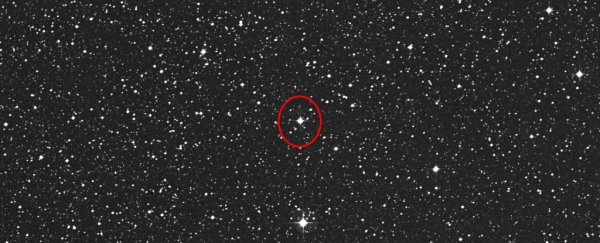If you look carefully into the night sky, you might see a star that wasn't visible last week.
In the equatorial constellation of Ophiuchus, a star named RS Ophiuchi about 4,566 light-years away has just had an epic eruption. This nova was so bright that the star is now visible to the naked eye, at a magnitude of around 4.8 – a whopping seven magnitudes brighter than its usual 12th magnitude dimness.
Novae are rare enough to spot at the best of times, but what makes this occasion so special is the rarity of the star. RS Ophiuchi is what is known as a recurrent nova – a star that erupts periodically – and only 10 of these stars have ever been discovered in the Milky Way.
RS Ophiuchi typically erupts every 15 years or so. Its last nova was in 2006, so the new burst is right on schedule, and was first reported on 8 August 2021 by Irish amateur astronomer Keith Geary. That detection was rapidly followed by reports of others around the world.
RS Ophiuchi OUTBURST
— mizuho kai (@mizuho73700856) August 9, 2021
Taken by Ernesto Guido, Marco Rocchetto & Adriano Valvasori on August 9, 2021 @ Remotely from Australia through TELESCOPE LIVE networkhttps://t.co/ttjH74mm0l
recurrent nova RS Oph is in Outburst. The last large outburst of RS Oph occurred in Feb. 2006, → pic.twitter.com/FMqDZEQ0Xx
What causes the star's repeated novae is overenthusiastic snacking. RS Ophiuchi is a binary star, a white dwarf in close orbit with a red giant. As the two whirl around each other, material – primarily hydrogen – is siphoned off the red giant by the smaller, denser white dwarf.
This hydrogen accumulates on the white dwarf's surface, where it heats up. Periodically, the mass becomes so great that the pressure and temperature at the bottom of the layer is sufficient to trigger a thermonuclear explosion, violently expelling the excess material into space. This is the nova.
According to spectroscopic observations of the star, the brightening is consistent with a nova – so violent that the material is being ejected into space at velocities around 2,600 kilometers per second.
The Fermi Gamma Ray Telescope also detected a gamma-ray source at the time and location of the nova, confirming that an outburst was indeed taking place.
If the white dwarf accumulates so much mass that it exceeds a critical mass threshold called the Chandrasekhar limit, it will become unstable and explode in a Type Ia supernova, which will spell the end of the binary.
That may happen to RS Ophiuchi one day, but it's not today – the two stars will live on to continue their spectacular dance, and explode another day.
Generally, what will happen next based on previous observations of the star's novae is that RS Ophiuchi, after a rapid burst into brightness, will gradually fade over the next few weeks, and eventually from view.
The maximum magnitude visible to the naked eye is about 6.5, so you'll want to get in quickly if you want to check it out – obviously binoculars or a telescope will improve the view.
The next outburst won't take place until RS Ophiuchi has once again transferred sufficient hydrogen from the red giant to the white dwarf to trigger the thermonuclear explosion.
That won't happen for another 15 to 20 years, probably (it does vary a little), so if you want to enjoy the light show, you should look towards the coordinates RA 17h 50m 13.17s, Dec –06° 42′ 28.6″.
Scientists will also likely be getting in on the action. Although several of the star's eruptions have been observed, every nova affords new opportunities to learn more, since the technology to conduct observations will have improved since the last one.
Making a careful study of RS Ophiuchi with the current set of tools available to do so may very well yield new information about these fascinating explosive events.
